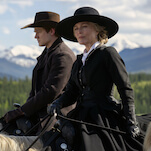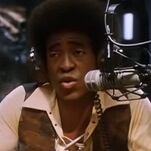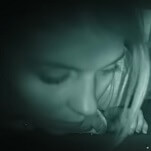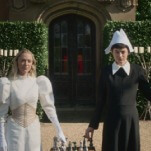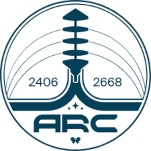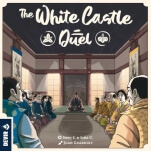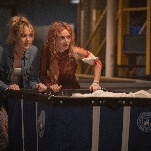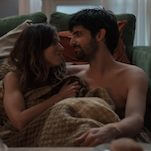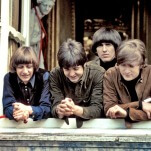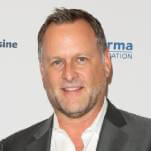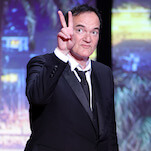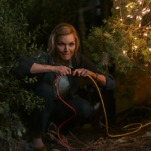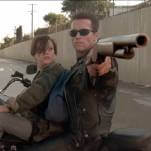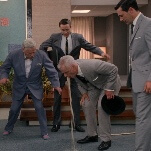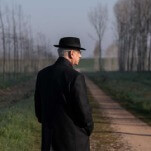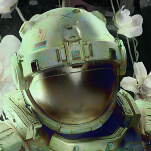When the space shuttle Challenger exploded in 1986, taking the lives of seven astronauts (including schoolteacher Christa McAuliffe), America mourned. The visuals were as striking as they were horrifying: The shuttle successfully lifting into the morning sky, only to blow up in front of millions. The disaster demanded an inquiry, and that inquiry demanded answers. But as Richard Feynman (William Hurt) soon discovers in The Challenger Disaster, wanting answers isn’t necessarily the same as wanting the truth. The committee tasked with providing the public with a satisfactory conclusion is made up of men (and one woman) with different designs on the truth, and different interests shaping the results of their investigation. Feynman stands alone, and that may not be enough.
The Challenger Disaster, the Science Channel’s first made-for-TV movie, does not deal with the lead-up to the explosion; nor does it detail the lives of the astronauts who died, or the families left to pick up the pieces in the aftermath of their deaths. Apart from the opening sequence—which shows, through news footage and a handful of re-created scenes, the buildup to and fiery culmination of that January 28 launch—the film sticks largely to Professor Feynman’s perspective. An outsider brought in at the request of a former student, Feynman’s determination and refusal to allow others to dictate the course of his investigation create the majority of the dramatic tension, which is beneath the surface: an occasional strained shout here, a mournful acknowledgement of loss there. It’s a counterintuitive artistic choice that nonetheless pays off. Where a more traditional approach could’ve easily been bogged down by sentiment, The Challenger Disaster’s levelheaded tack allows for a specific understanding of the decisions and shortsightedness that caused the catastrophe. It’s a celebration of science that acknowledges the limits of humanity.
The movie wouldn’t work at all were it not for Hurt’s presence in the lead role. Giving Feynman a shaggy, Lebowski-esque look without sacrificing a whit of insight, Hurt’s performance is frustrated, fascinated, and furious by turns; his Feynman is a relentless, determined thinker baffled by the sluggishness of bureaucracy, and watching him butt heads with the chairman of the committee looking into the disaster (Brian Dennehy, at his Brian Dennehy-est) is a consistent pleasure. The model of an outsider who refuses to give in to the rules is a familiar one, but the specific nature of the mystery at hand sets this story apart. Feynman isn’t looking to catch a killer or stop a thief; determining what caused the explosion is less a matter of bringing irresponsible parties to justice, and more determining a cause to avoid the repetition of an undesired effect. There are egos and government contracts at stake, but most important is the right of fact and logic to win out against concerned interests. Weaving in references to both Feynman’s work on the atomic bomb and the two forms of cancer that would ultimately kill him, Kate Gartside’s script portrays a flawed but fundamentally sane man whose refusal to accept easy answers marks him as a special kind of hero.
It’s not a perfect work. The budgetary limits show through occasionally, and some bits of dialogue are too blandly informational to ring true; the score is frequently more didactic than inspiring. But while the narrow view of the tragedy means a limit to the movie’s broader appeal, it’s intensely refreshing to see a story like this told without any need to soften or commercialize its ideas. At one point. Feynman mentions his atheism, and it’s an observation for which no balancing moment of faith is required; this isn’t a movie about atheism, but it also doesn’t treat a lack of belief as a problem that needs to be fixed—or a personality quirk, or anything more or less than a personal philosophy. With help from Air Force General Kutyna (Bruce Greenwood) and first female astronaut Sally Ride (Eve Best), Feynman uncovers the layers of miscommunication, bad assumptions, and neglect behind the disaster. They succeed, leading to a final reveal that would’ve been deemed too perfect if it weren’t for the footage from the original event playing under the end credits. But it’s a minor triumph—an appendix tacked on to an official report, a moment of clarity surfacing briefly out of a sea of white noise. The movie’s willingness to admit this, to treasure the precise limits of an answer without diminishing or overdramatizing its importance, makes it both science and, unexpectedly, art.









